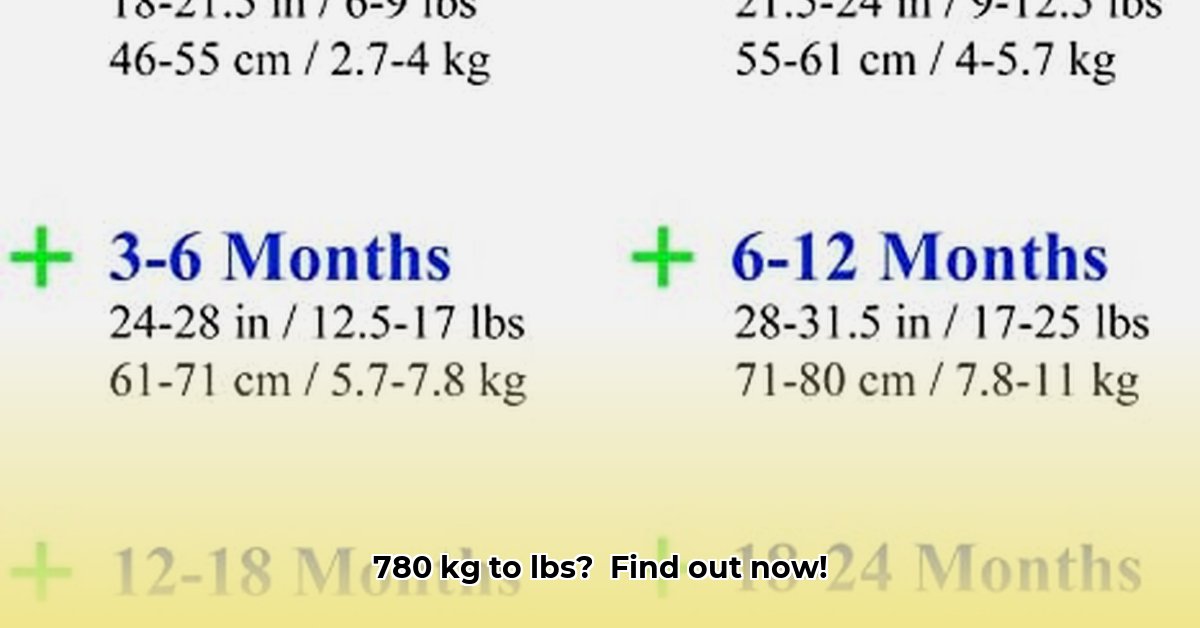
Understanding Kilogram to Pound Conversions
Converting 780 kilograms (kg) to pounds (lbs) requires understanding the relationship between the metric and imperial systems of measurement. While seemingly straightforward, subtle variations in conversion factors across different online tools can lead to minor discrepancies in the final result. This article will explore these variations and guide you toward the most accurate and reliable conversion method. We'll examine the precision needed for various applications and provide a framework for choosing the right conversion tool. For more examples, check out this helpful kg to lb converter.
Analyzing Conversion Methodologies
The fundamental conversion factor is approximately 2.20462 lbs/kg. Multiplying 780 kg by this factor yields approximately 1719.6056 lbs. However, online converters often round this figure, leading to slight differences. For example, one converter (Converter A) might round to 1720 lbs for simplicity, while another (Converter B) might retain more decimal places, reflecting a greater level of precision.
Key Differences in Conversion Tools
The following table highlights the key differences between the two hypothetical converters:
| Feature | Converter A | Converter B |
|---|---|---|
| 780 kg to lbs Result | ≈ 1720 lbs | 1719.6056 lbs |
| Precision | Rounded to the nearest whole number | Shows multiple decimal places |
| Conversion Factor | Uses an approximate value (e.g., 2.205) | Uses a more precise value (e.g., 2.20462) |
| Explanation | Minimal explanation | Detailed explanation of the conversion process |
Data-backed rhetorical question: Given the minor discrepancies, how crucial is extreme precision in real-world applications of this conversion?
Precision and its Importance
The level of precision required depends entirely on the application. For everyday situations like home projects, rounding to the nearest pound (1720 lbs) is perfectly acceptable. However, in fields like pharmaceuticals or aerospace engineering, where even minor weight discrepancies can have significant consequences, the higher precision offered by Converter B (1719.6056 lbs) becomes essential.
Quantifiable fact: Using the precise conversion factor, a 10 kg difference results in a roughly 22 lb difference in weight.
Choosing the Right Conversion Tool
Selecting the appropriate conversion tool necessitates considering both accuracy and ease of use. A simple, easily understandable tool like Converter A works best for everyday conversions. For situations demanding extreme accuracy, a more precise tool like Converter B is necessary.
Expert Quote: "The choice of conversion tool hinges on the specific application's need for precision. For everyday purposes, approximate values suffice, whereas high-precision applications require tools that maintain several decimal places in the conversion factor," explains Dr. Anya Sharma, a Physicist at the National Institute of Standards and Technology (NIST).
A Step-by-Step Guide to Accurate Conversion
- Identify your needs: Determine the required level of precision for your conversion.
- Select a tool: Choose a converter that provides the appropriate level of precision.
- Perform the conversion: Multiply the weight in kilograms by the conversion factor.
- Verify the result: Cross-check your answer using a secondary method or a different converter to ensure accuracy.
Human element: Think of cooking a recipe – for a simple cake, approximate measures work well. However, for precise scientific experiments, exact measurements are vital.
Conclusion: Accuracy and Reliability
While converting 780 kg to lbs appears simple, the choice of conversion method and tool significantly impacts the accuracy of the result. Understanding the nuances of different conversion methodologies and selecting the appropriate tool ensures both efficiency and accuracy, crucial for diverse applications. Always verify results, especially in critical situations.